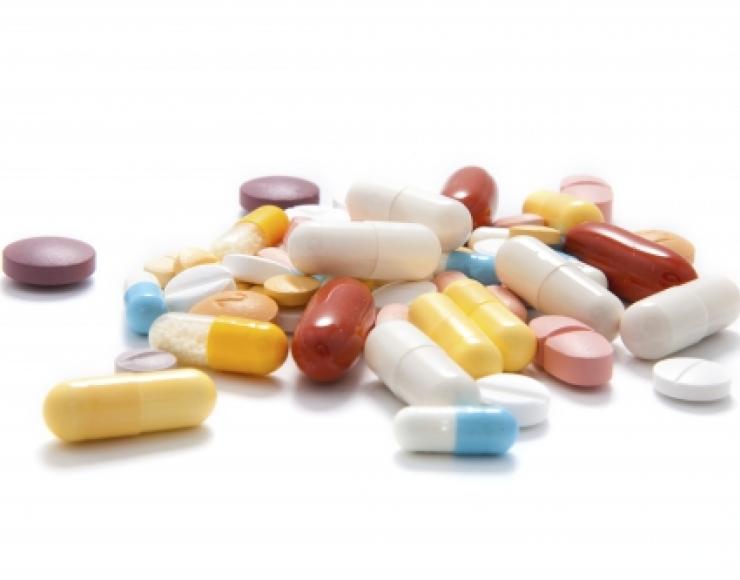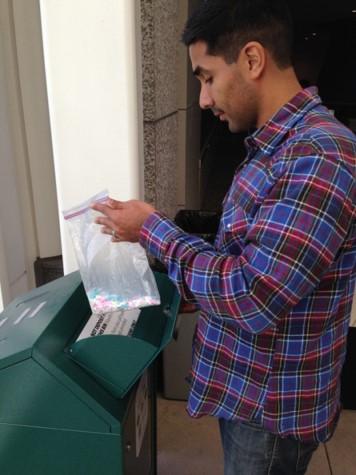Household drugs that are flushed down the toilet or drain, or even thrown in the trash can get into our waterways, hurting wildlife and contaminating drinking water. In addition, when people throw away needles or other “sharps” associated with medication, the products clog up wastewater systems, or sanitation workers get stuck and face serious health effects.
That’s why Clean Water Action worked for many years at the county level to get local jurisdictions to pass ordinances requiring pharmaceutical manufacturers to pay for safe collection events and bins.
Our success at the local level eventually led to the passage of SB 212 (Jackson), which established these requirements state-wide.

On January 1, 2021 all Californians will have access to safer ways to get unused or unwanted medications out of the house.
Under the regulatory eye of Cal Recycle, drug and sharps manufacturers have worked either on their own or together since the bill’s passage to ensure that communities have convenient, accessible ways to properly dispose of these dangerous products. These include secure drop off bins, mail back programs, and special collection events. At the same time, other entities, including some pharmacies, police departments, and hospitals have also installed drop off sites. Here are tips for you to clean out your medicine cabinet safely and where to dispose of your unused medicines. Then you can read more under background as to why it is important that each of us do what we can to keep medications and sharps out of our environment.
How to Dispose of Medications

All medications can harm the environment, as well as those who may misuse them, such as small children and the elderly. That is why it is a good idea to get rid of unused or out of date over the counter and prescription drugs. Here is how:
- Never flush medication down the drain or toilet.
- If the medication is solid, such as pills or tablets, empty them, along with others into a sealable plastic bag and recycle the original container, after removing or hiding all personal information from the label.
- Keep liquid medications in their original bottle or container.
- Find the nearest disposal site and drop the entire bag into the small (non-accessible) opening or mail back your medicine in a postage paid envelope (see below for links to finding this information).
- In most cases the following are not accepted in disposal bins: herbal remedies, vitamins, supplements, cosmetics, other personal care products, medical devices, batteries, mercury-containing thermometers, sharps, and illicit drugs. You may also be directed elsewhere for chemotherapy drugs, so it’s a good idea to keep these separate.
How to Dispose of Needles, Syringes, and Other “Sharps”
Sharps take many forms, including but not limited to various types of needles, syringes, epi-pens, lancets, and auto-injectors.
- Do not toss sharps in the toilet or in the trash!
- Never dispose of loose sharps. Instead put them in a hard plastic (not glass, easily breakable plastic, or plastic that can be easily punctured) container with the lid tightly sealed. Many pharmacies sell containers, or even give them away (worth asking) with either disposal instructions or mail back labels.
- Find a drop off site near you and put the entire container in the bin.
- Do not throw medications in the same bin as sharps.
Where to Find Info on Where to Dispose of My Medications or Sharps
- Check with your pharmacy. Some of them, esp. the big chains may have a bin for one or the other. You can also find participating pharmacies here.
- Check out Med-Project, which is the effort developed by the industry folks under SB 212. If you put in your zip code, you may find one of their bins.
- Call your local police department. Some of them have bins, including those paid for by Med-Project.
- Check in with your city or county.
- Your local hospital may have bins in their lobbies or pharmacies. Call and ask if they are available for non-patients/clients.
- When you pick up a prescription, ask the pharmacist if there is a mail-back program for any you don’t take (though always follow your doctor’s instructions about whether you should take all of a medication). If you are picking up sharps, ask if they have or sell the proper containers.
- If you purchase sharps or medications on line, request a pre-addressed, prepaid mail back pouch or container. See the California Department of Public Health for a list of sharps mail-back programs approved by the state’s Dept. of Public Health.
- Go to Cal Recycle’s website for sharps and for medications.
We are fortunate to live at a time when medical advances, including the development of antibiotics and other types of drugs, have enhanced and lengthened human life. Unused medications, however, pose some risks to human health and the environment that are not widely recognized. When they get into the wrong hands, unused medications can lead todrug abuseand accidental poisonings. Pharmaceuticals are also ending up in our waterways, including drinking water sources. Consequently, there are numerous reasons to ensure that we have convenient, accessible ways to properly dispose of unused or out of date household drugs.
Watch our video below on the various reasons to get unused medications out of the house, but disposed of properly.
Drugs in the environment have definite and disturbing impacts on aquatic species. Synthetic estrogens in oral contraceptives have been linked to decreased reproduction in aquatic species; feminizing male fish and reducing fertility. Anti-depressants are causing behavioral changes in some wildlife species, altering reaction times to predators and changing foraging behavior. Hypertension drugs, antibiotics, and antihistamines are among the products that bioaccumulate in aquatic species and interfere with the food chain. Learn more here.
The potential impact on humans has not been well studied, though levels are considered too low to be of acute concern. However, scientists consistently admit that they do not know what the effects of long term exposure to low doses or the mixture of drugs in water will have, especially to vulnerable populations like children. What we do know is with the ever growing use of medications, the presence of pharmaceuticals in the environment is also likely to increase.
Instead of waiting until we significant negative human health effects, we need to act now to prevent this problem from getting worse. One of those actions must be to dispose of unused medications in the most environmentally and safe way possible.
Stopping the problem at the source
There are a variety of ways that drugs get into the environment. One of the most significant is when unused medications are disposed of down the drain or toilet. Wastewater treatment plants are not equipped to remove these chemicals from sewage; they are eventually released into the marine environment when treated wastewater is discharged into nearby waterways. Throwing drugs in the trash, even in an unusable form, is also a problem because water in landfills is treated through the wastewater system and eventually released into local waterways.
We can stop unused medications from getting into our water resources and reduce misuse by providing collection at secure, convenient sites and then properly disposing of the drugs as hazardous waste.
Convenient, secure drug disposal programs work, especially when paid for by those who make tremendous profits from the sales of medications and sharps. Extended Producer Responsibility (EPR) has meant that both consumers and industry play their parts in protecting the environment and public health in other countries including Mexico, parts of Canada, Europe and Japan (see our factsheet here). And it is working in California. For instance, during a 30 month limited pilot program, the City and County of San Francisco collected 23 tons of drugs, keeping them out of San Francisco Bay and the hands of those who would abuse them!
You can download a factsheet with other examples of success here.
